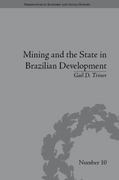Question
Define the following terms. Fundamentals of Economics -Definition and scope of economics -Scarcity, choice, opportunity cost -Preferences - ranked and subjective -Marginal units and the
Define the following terms.
Fundamentals of Economics
-Definition and scope of economics
-Scarcity, choice, opportunity cost
-Preferences - ranked and subjective
-Marginal units and the "diamond-water paradox"
-Diminishing marginal utility
-Individual demand, individual supply
-market demand, market supply
-equilibrium, Qs=Qd
-Broken Window Fallacy
-Micro Review
-Price and quantity
-Change in quantity demanded/supplied vs. change in demand/supply
-Consumer and producer surplus
-Surpluses and shortages
-Dead Weight Loss
-Government interventions
-Taxes, price ceilings, price floors, minimum wage
-Binding vs. non-binding
-Production Possibilities frontiers
-Attainable vs. unattainable points
-Efficient vs. inefficient points
-Linear vs. bowed outward PPFs
-Tradeoffs/opportunity costs
-Absolute vs. comparative advantage
-Specialization and the gains from trade
-Macro Measurements
-Nature of production
-Factors of production
-Entrepreneurship
-Profit=Revenue-Cost
-Circular flow model
-Two agents - Households/individuals and firms
-Two markets - final goods/services and factors of production
-National income/output and GDP
-GDP definition, issues, real vs. nominal, units
-Price level and CPI
-No common unit for prices, indexing
-Inflation adjustments and measuring the rate of inflation.



Step by Step Solution
There are 3 Steps involved in it
Step: 1

Get Instant Access to Expert-Tailored Solutions
See step-by-step solutions with expert insights and AI powered tools for academic success
Step: 2

Step: 3

Ace Your Homework with AI
Get the answers you need in no time with our AI-driven, step-by-step assistance
Get Started


